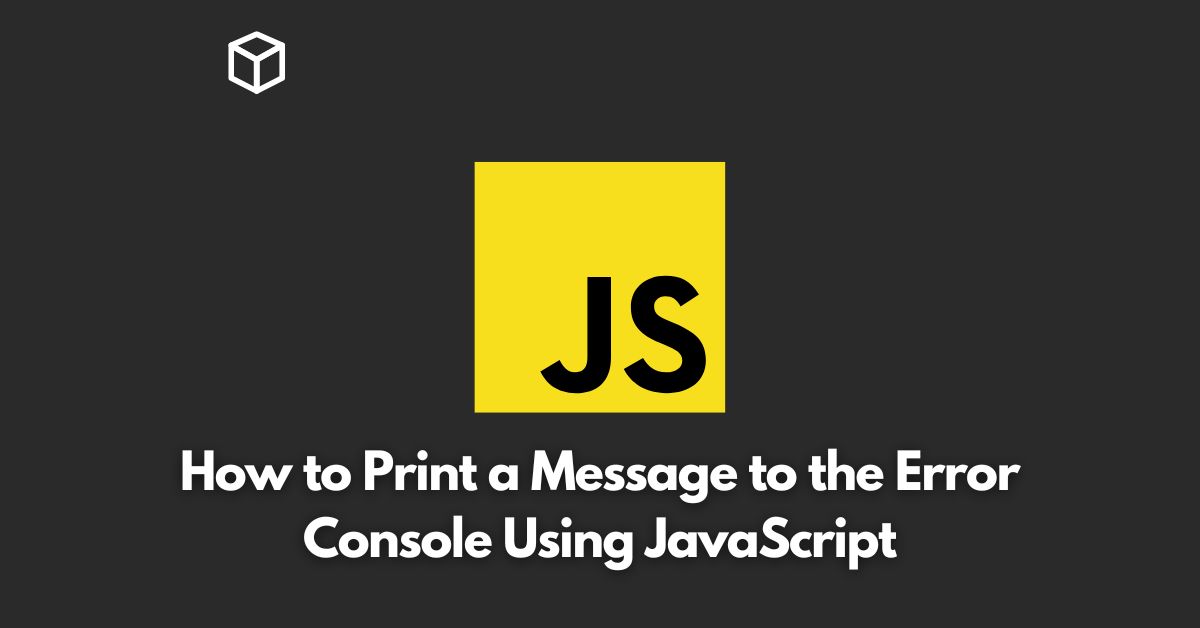As a software developer or technical writer, it is important to understand how to debug your code and find errors.
In JavaScript, one of the most useful tools for debugging is the error console.
The error console allows you to log information, warnings, and errors in your code, making it easier to find and fix bugs.
In this Javascript tutorial, we will explore how to print a message to the error console using JavaScript.
Error Console
The error console is a tool that can be found in most web browsers, including Google Chrome, Mozilla Firefox, and Microsoft Edge.
It is used to log messages, warnings, and errors in your code, helping you to identify and debug problems in your applications.
When an error occurs in your code, it will be logged in the error console, allowing you to view the details of the error and find out what went wrong.
Using console.log() to Print a Message to the Error Console
The most common way to print a message to the error console in JavaScript is to use the console.log() method.
The console.log() method accepts one or more arguments, and it will log the values of these arguments to the error console.
For example, if you want to log a message saying “Hello World!”, you can use the following code:
console.log("Hello World!");When this code is run, the message “Hello World!” will be logged in the error console.
You can also pass multiple arguments to console.log(), and these arguments will be separated by a space in the error console.
For example:
console.log("Hello", "World!", 123);This code will log the message “Hello World! 123” to the error console.
Using console.warn() to Print a Warning Message
In addition to console.log(), you can also use the console.warn() method to log a warning message in the error console.
The console.warn() method works just like console.log(), but it will log the message as a warning, making it easier to identify warning messages in your code.
For example:
console.warn("This is a warning message.");This code will log the message “This is a warning message.” as a warning in the error console.
Using console.error() to Print an Error Message
Just like console.warn(), you can also use the console.error() method to log an error message in the error console.
The console.error() method works just like console.log() and console.warn(), but it will log the message as an error, making it easier to identify error messages in your code.
For example:
console.error("This is an error message.");This code will log the message “This is an error message.” as an error in the error console.
Conclusion
The error console is an essential tool for debugging your code in JavaScript.
By using console.log(), console.warn(), and console.error(), you can log messages, warnings, and errors in your code, making it easier to find and fix bugs.
Whether you’re a software developer or technical writer, understanding how to print messages to the error console is an important part of working with JavaScript.




